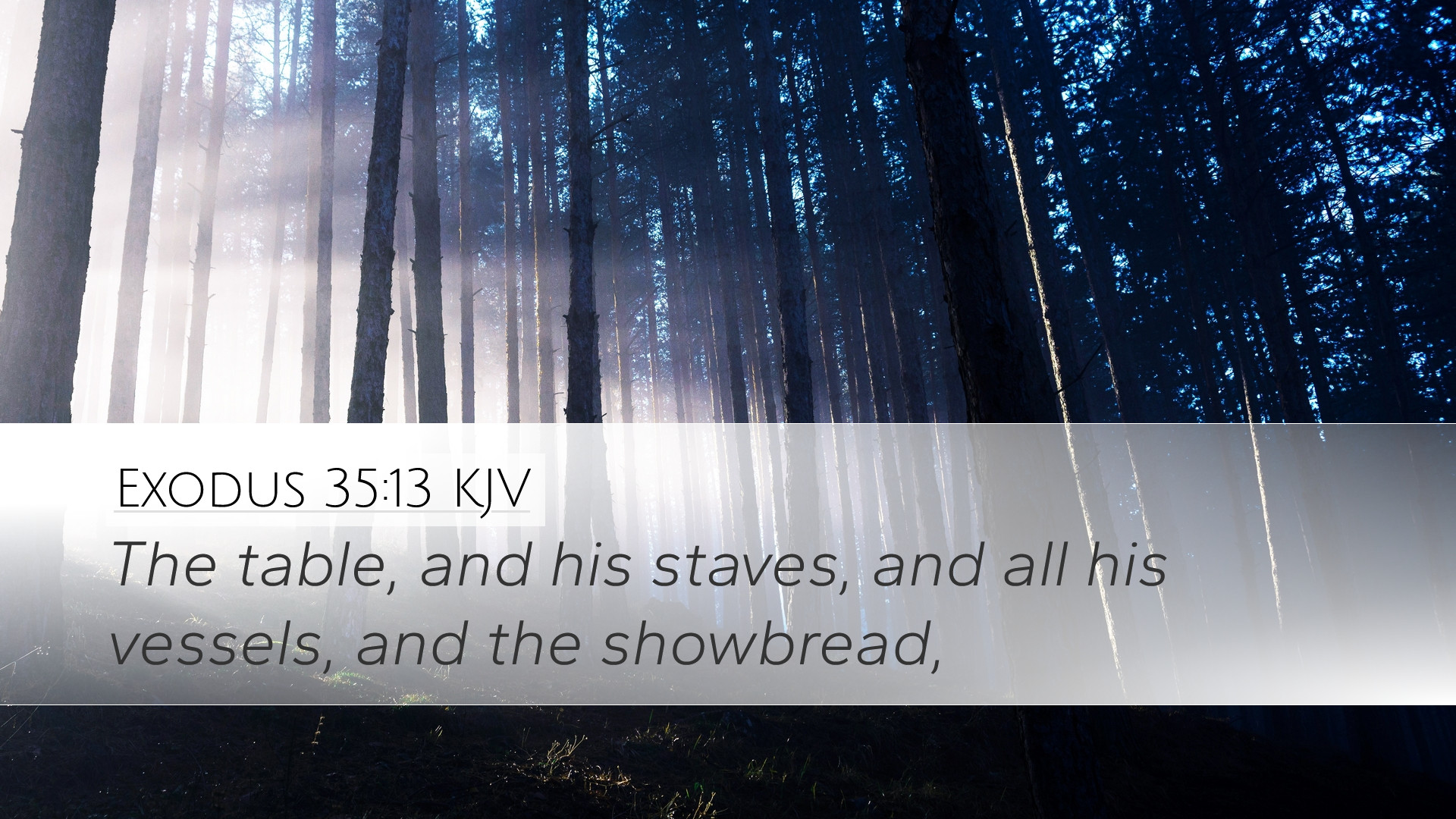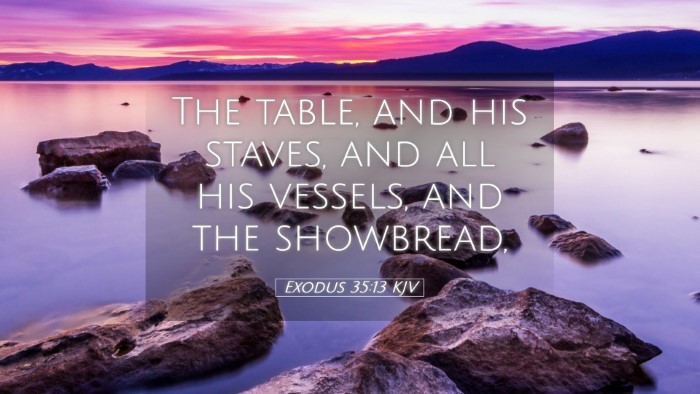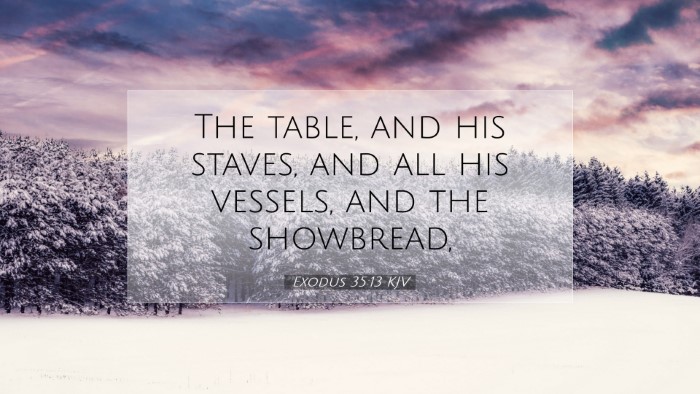Bible Commentary on Exodus 35:13
Verse Summary: Exodus 35:13 states, "The table and his staves, and all his vessels, and the shewbread." This verse is part of the detailed instructions for the construction of the tabernacle, specifically focusing on the elements associated with the table for the showbread.
Contextual Background
The book of Exodus chronicles the journey of the Israelites from bondage in Egypt to the Promised Land. Central to this narrative is the establishment of the Tabernacle, a mobile dwelling place for God among His people, symbolizing His presence, holiness, and covenant relationship. As the Israelites march through the wilderness, God issues commands concerning worship and community organization, aiming to foster fidelity and devotion within the newly formed nation.
The Significance of the Table
Matthew Henry: In his commentary, Matthew Henry emphasizes the symbolic importance of the table of showbread. He notes that it represents the communion between God and His people. The showbread serves as a reminder that God provides sustenance for His people, pointing towards the spiritual nourishment believers find in Christ.
Albert Barnes: Barnes elaborates that the table, along with its vessels, underscores the careful attention to detail required in worship. Each item had a divine purpose, illustrating the meticulous nature of God’s requirements. The presence of bread upon the table signifies the continual offering of thanks and acknowledgment of God's provision.
Adam Clarke: Clarke discusses the design and arrangement of the table, noting that it was made of acacia wood, overlaid with pure gold. He highlights the symbolism inherent in its construction material, suggesting that God's holiness and strength underpin the sustenance He provides.
Spiritual Implications
- Communion with God: The bread on the table symbolizes fellowship. Through it, the people are reminded of God's continual presence and sustenance in their lives.
- Continual Worship: The mention of "shewbread" indicates ongoing worship, highlighting the necessity of regular devotion and offering in the life of God’s people.
- Typology of Christ: The table and the bread serve as a precursor to the Lord's Supper. Just as the showbread was a staple in the tabernacle, Jesus refers to Himself as the Bread of Life, providing spiritual sustenance to believers.
Theological Reflections
This verse not only instructs the Israelites on how to construct the elements of their worship but also reveals profound theological themes concerning God's nature and His relationship with humanity. The imagery of bread throughout Scripture often parallels the sustenance and provision God offers, culminating in the teachings of Jesus in the New Testament. Believers can glean insights from this verse regarding the importance of setting aside regular time for communion with God, understanding that worship and gratitude must be intentional and systematic.
Conclusion
Exodus 35:13 may appear simple in its listing of items for the tabernacle, yet it encapsulates profound principles about God’s provision, the nature of worship, and the anticipation of Christ. For pastors, students, theologians, and scholars, this verse remains a reminder of the sacredness of preparing a space for God in our lives and the necessity of ongoing engagement with Him through worship and community.


